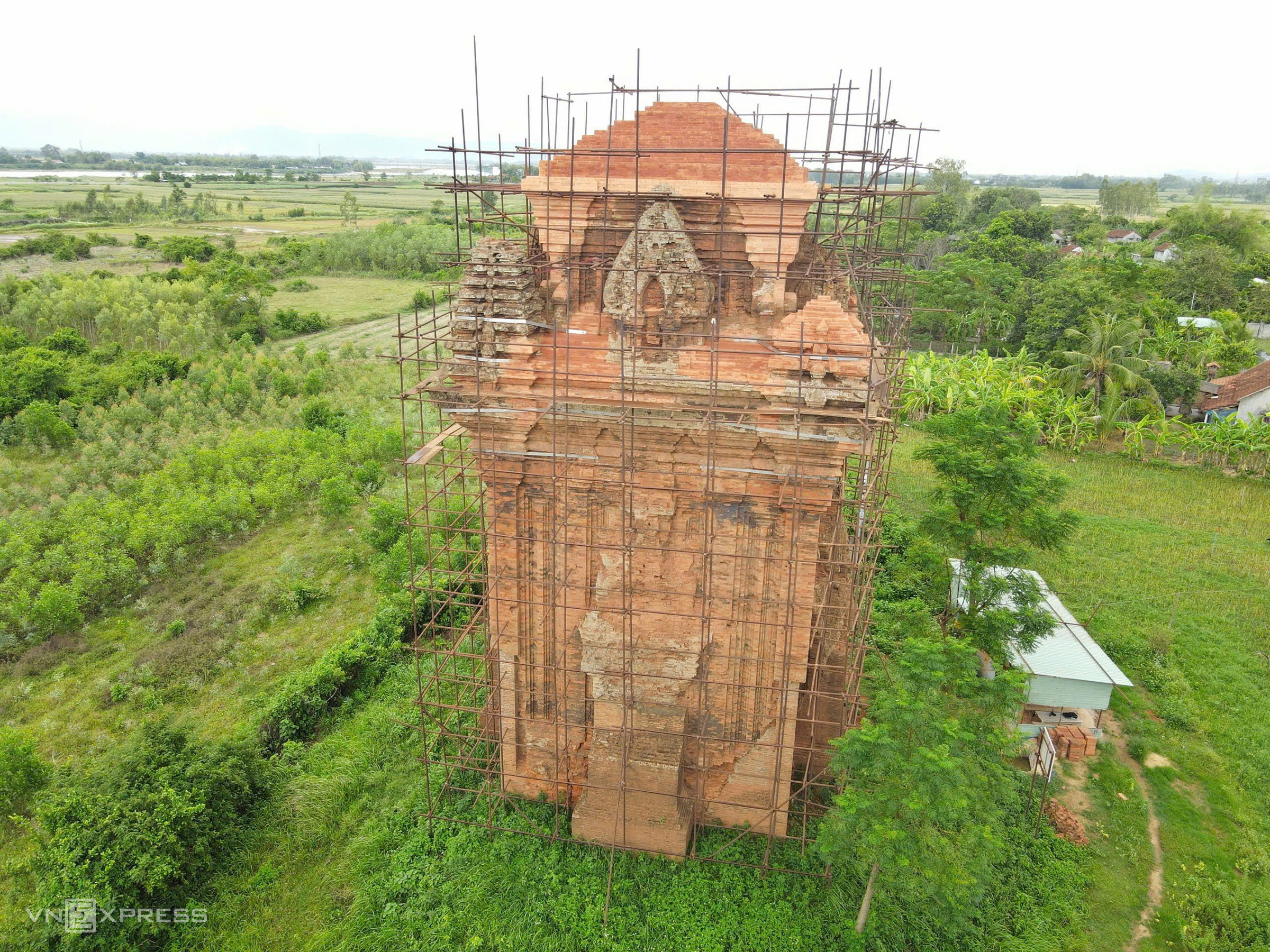 |
Thu Thien Tower in Tay Son commune (formerly Binh Nghi commune, Tay Son district, Binh Dinh province). The structure was built around the 11th century, during the transitional period between the My Son A1 style (Champa architecture) and the Binh Dinh style, but with a stronger Binh Dinh influence. |
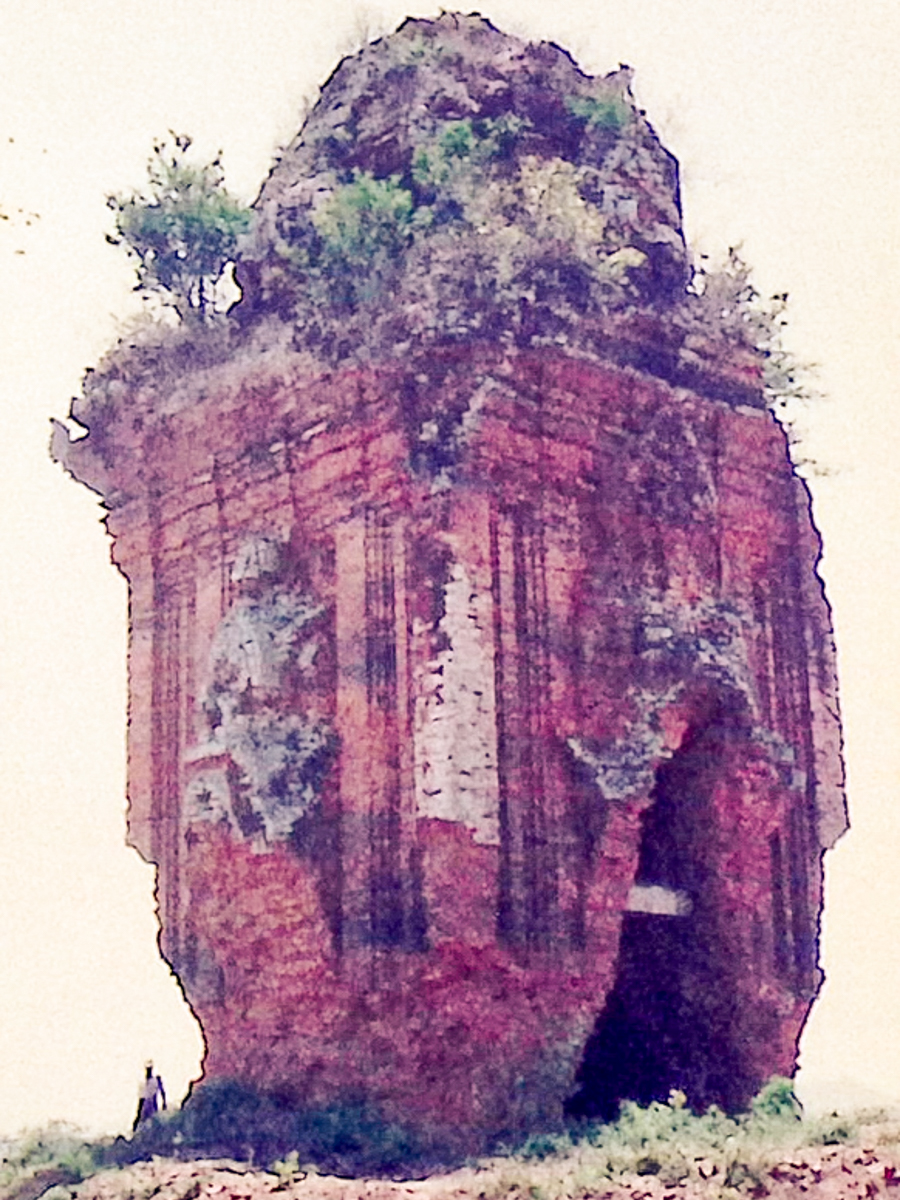 |
The restoration project has completed its first phase (roof section) after nearly a year of construction. |
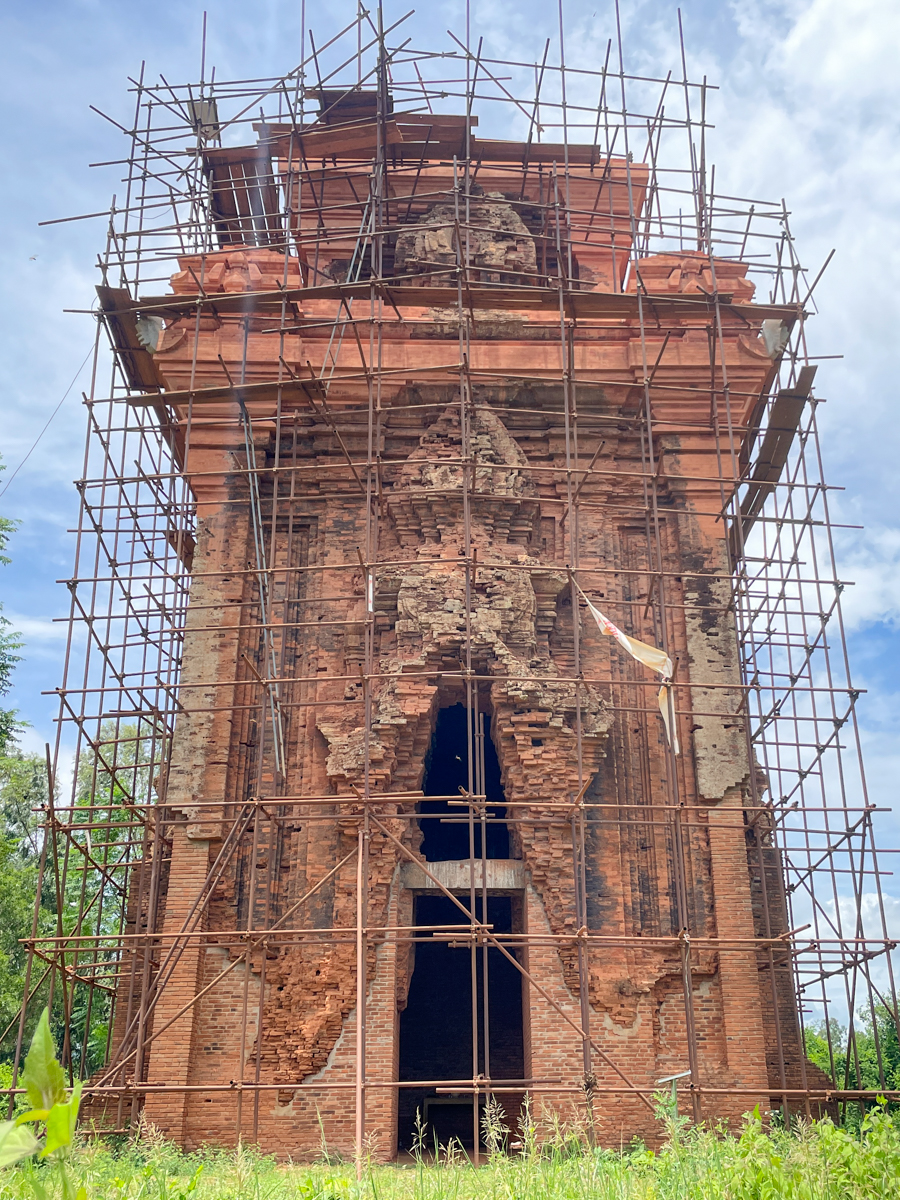 |
The worship altar inside Thu Thien Tower. The tower's body has a long crack. Phase 2 of the project will focus on restoring the tower's body. |
Thu Thien Tower, as seen in archival photos from 1994, was in a state of significant disrepair. In late 2024, the Department of Culture, Sports, and Tourism of Binh Dinh province (formerly) began restoration work to prevent further deterioration of the tower.
The main archway and false doors of the tower are collapsing. Stone belts and several stone decorations have fallen off. Currently, the tower is unguarded, and the gate is locked.
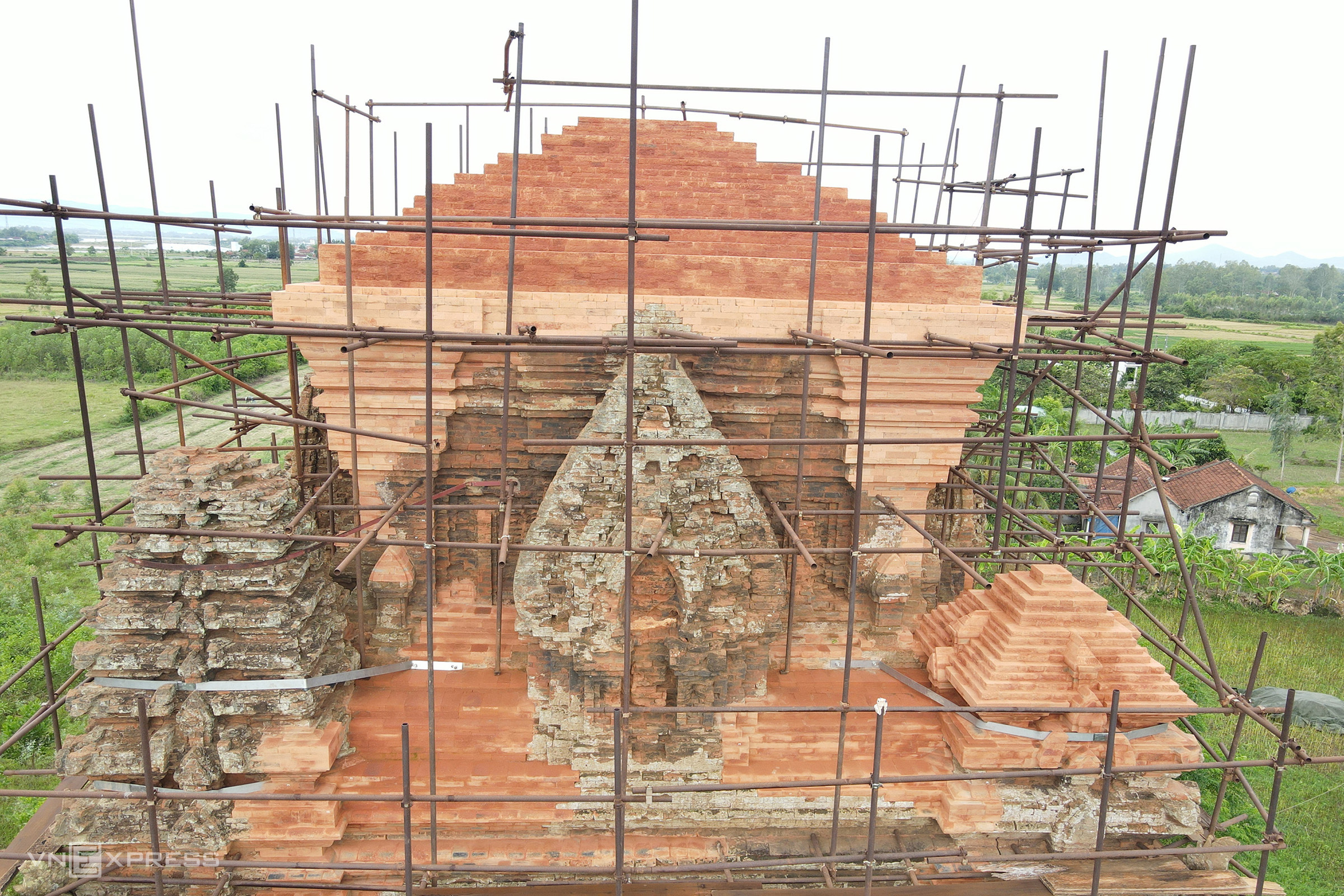 |
While most Champa towers in Binh Dinh (formerly) are built on hilltops, Binh Lam Tower stands on level ground. Constructed entirely of brick, it has a square layout with each side measuring 11.5 m, and its architecture consists of multiple levels. |
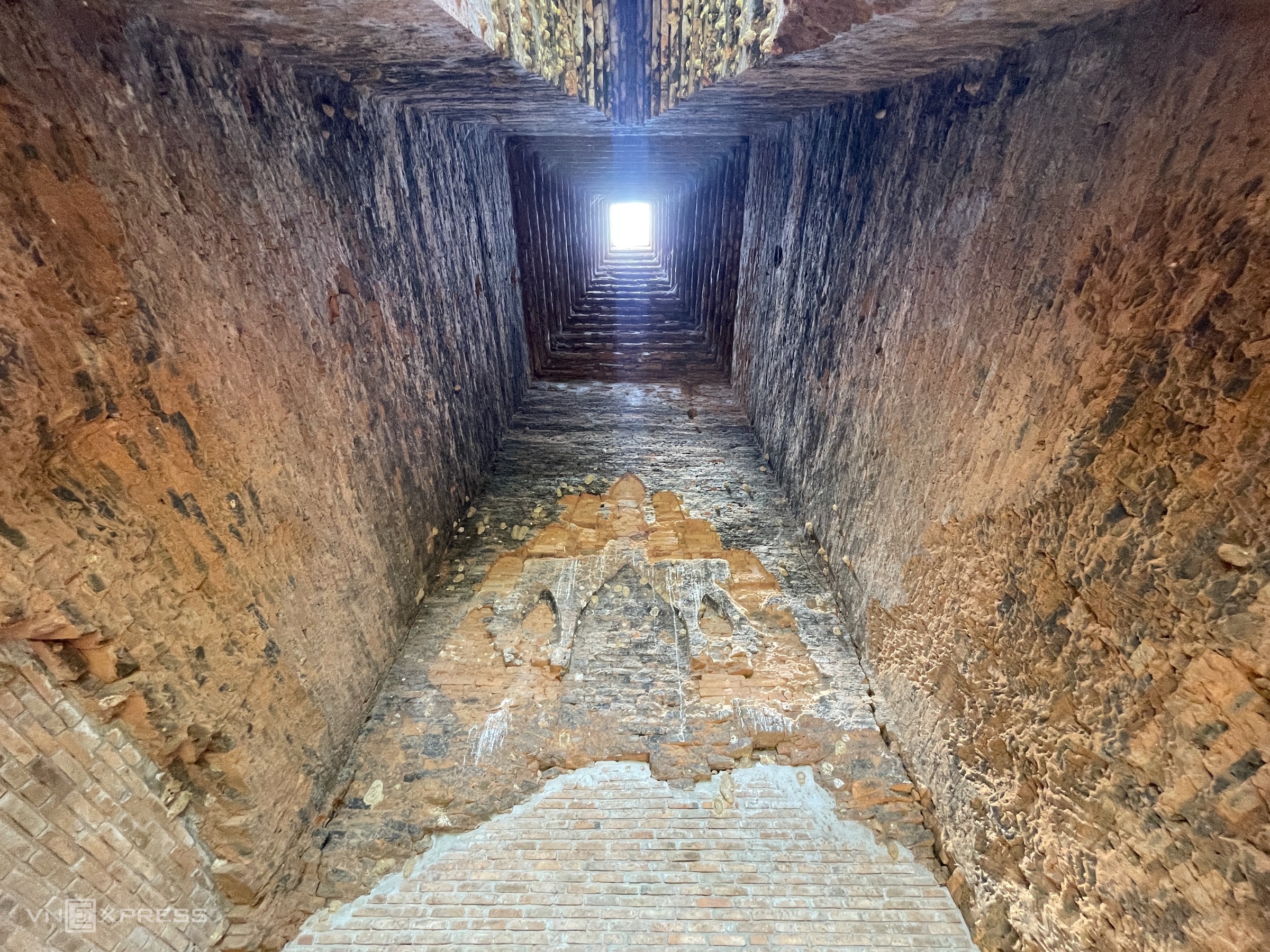 |
The management unit uses steel to reinforce the bas-reliefs at the north false door to prevent collapse. The decorative motifs on each level and the sculpted images of the tower-like castle are repeated and scaled down in the form of false doors, creating symmetry. |
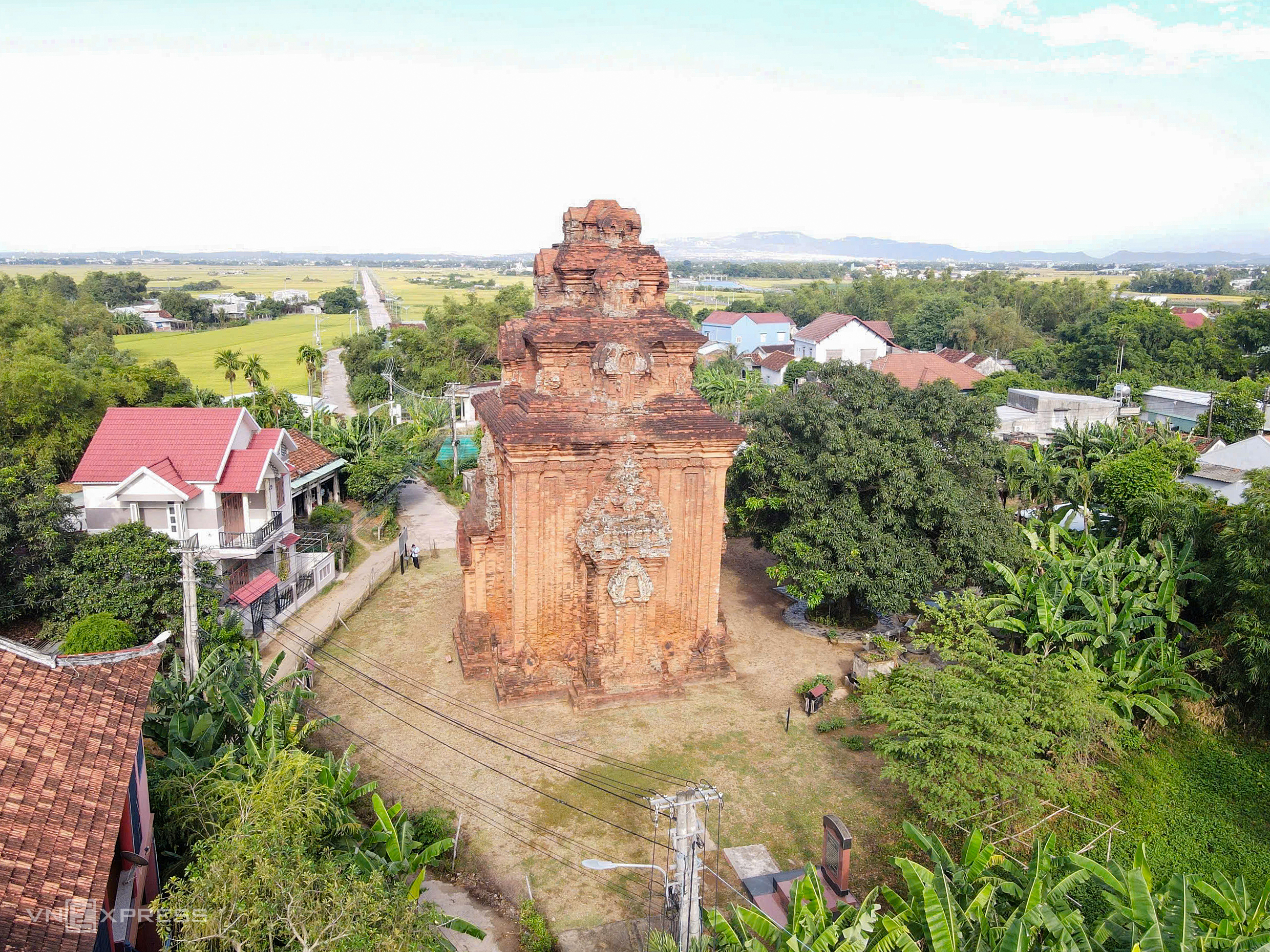 |
The entrance to Binh Lam Tower, viewed from the east. Bats inhabit the site, but a guard regularly chases them away and cleans the area daily. |
About 30 km away, Binh Lam Tower in Tuy Phuoc Dong commune (formerly Phuoc Hoa commune, Tuy Phuoc district, Binh Dinh province) was built between the late 10th and early 11th centuries. It's one of the earliest architectural structures in Binh Dinh and considered one of the most artistically perfect.
The tower is about 20 meters high and has 3 levels. The main entrance faces east, and there are 3 false doors. Each false door is a vivid artwork left by Champa artisans for posterity. Binh Lam Tower was recognized as a National Historical-Cultural Relic in 1993.
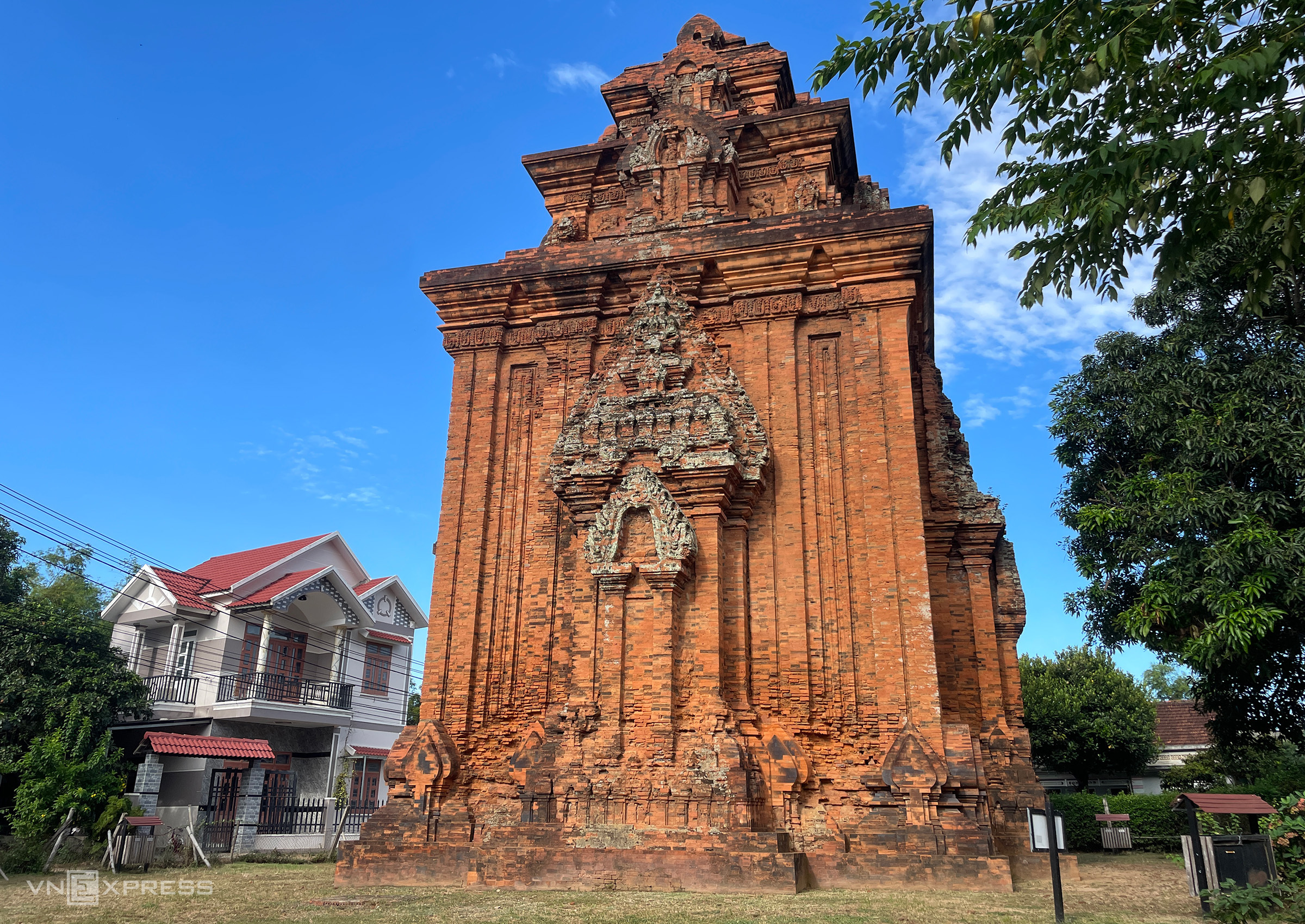 |
Over more than 10 centuries, the monument has suffered severe deterioration due to weather, war, and human activity. Details and patterns on the roof and walls have collapsed or fallen off, and ancient brick sections are severely weathered and eroded. |
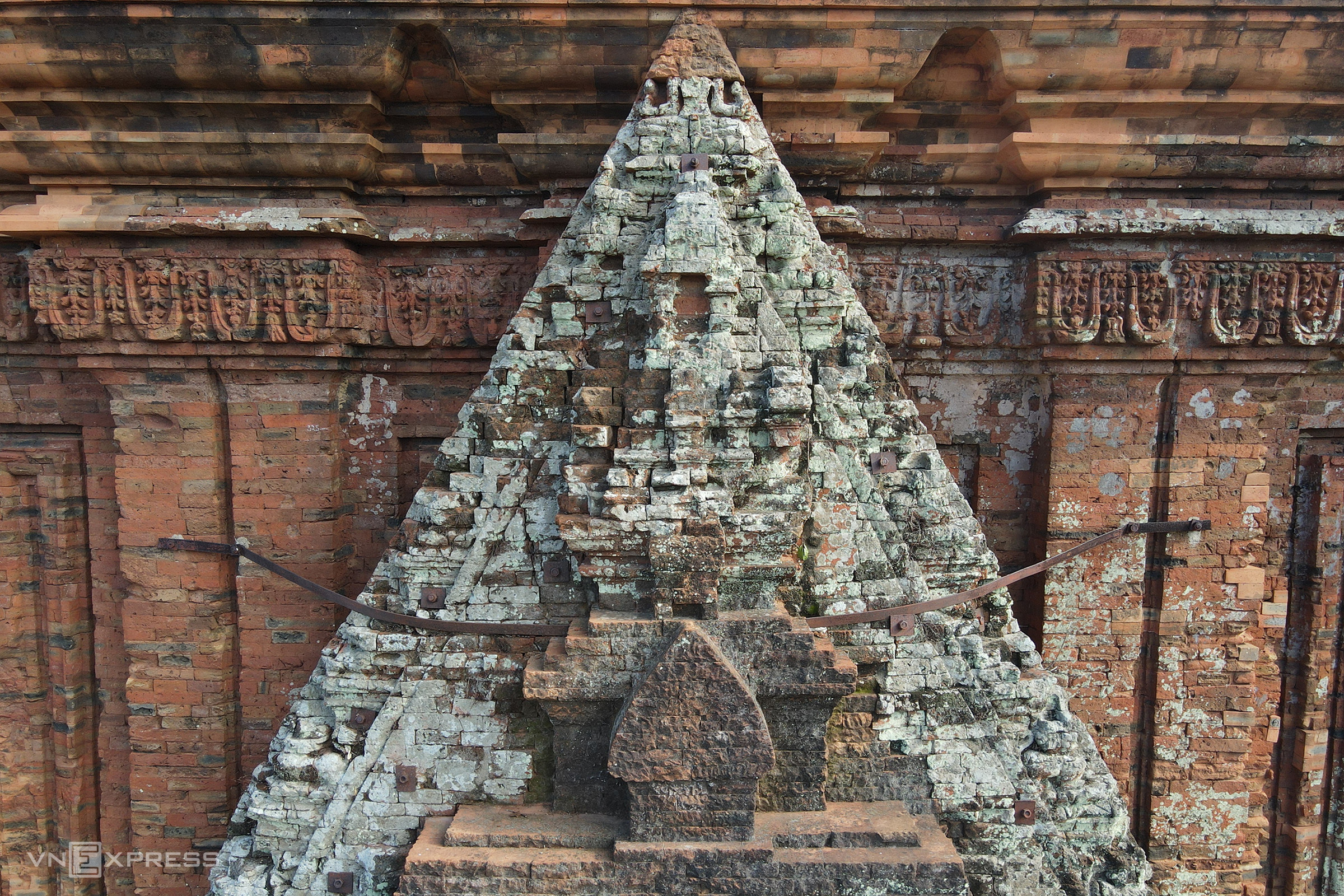 |
Old and new brick walls of Phu Loc Tower are covered in graffiti and carvings. Even bricks 2-3 meters high are defaced. |
 |
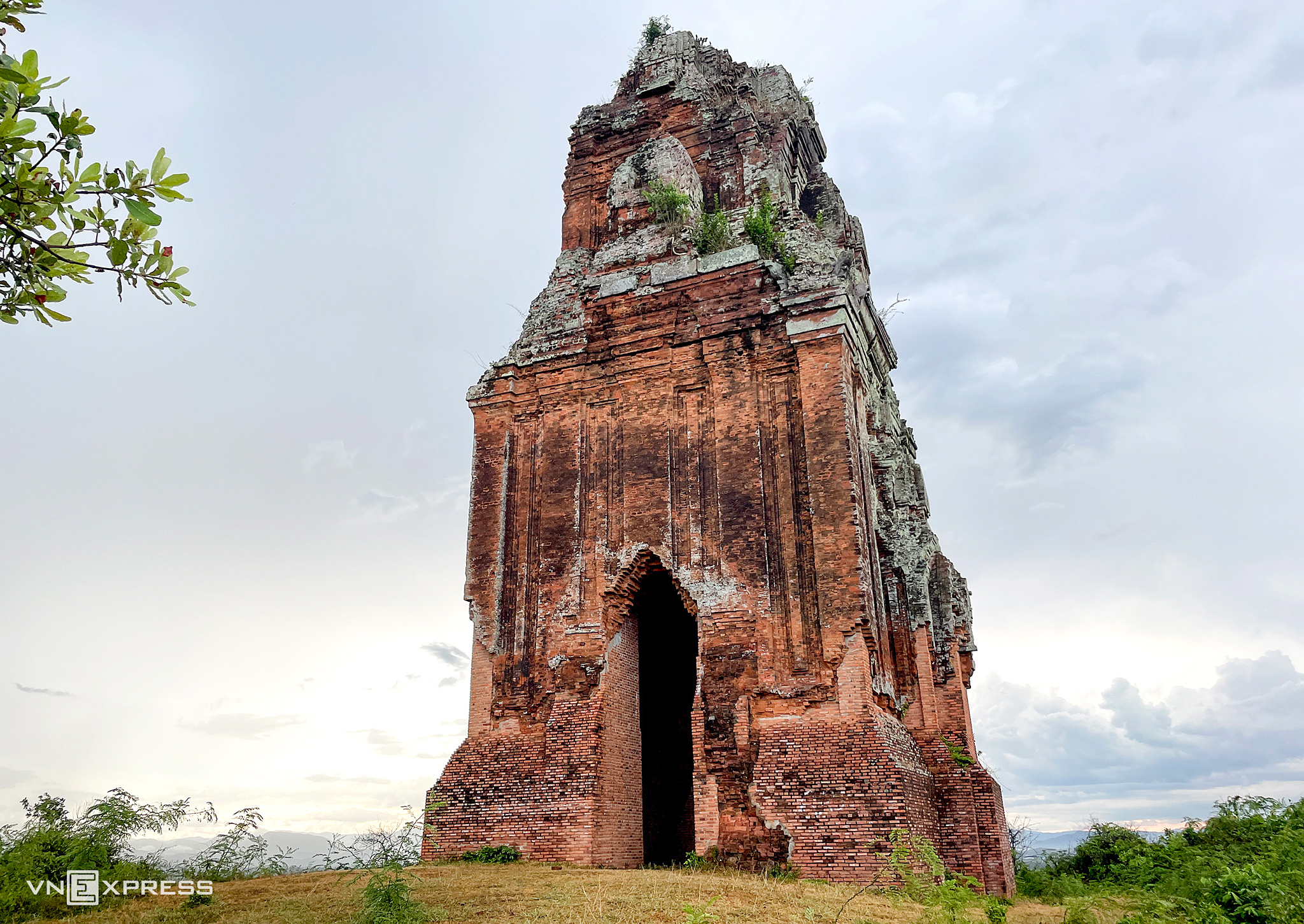 |
The Phu Loc Champa temple and tower complex in An Nhon Bac ward (formerly Nhon Thanh ward, An Nhon town, Binh Dinh province) was built in the 12th century during the early Binh Dinh style period, influenced by the Khmer style: placing the tower on a high hill and emphasizing massive structures. The site was designated a National Heritage Site in 1995.
Plant growth is encroaching on the top of this tower, causing damage. The tower's surface is covered in a light green, mold-like layer.
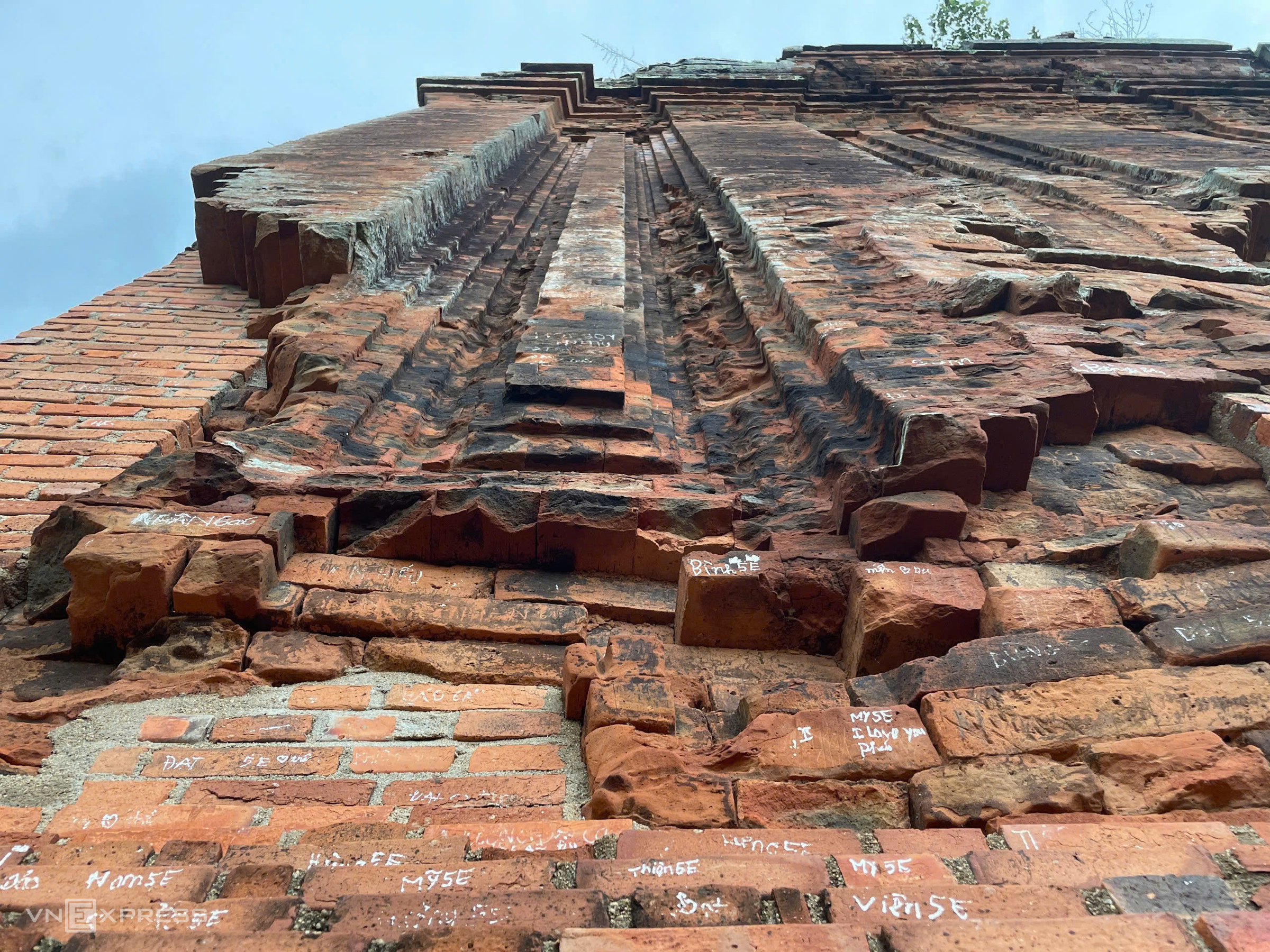 |
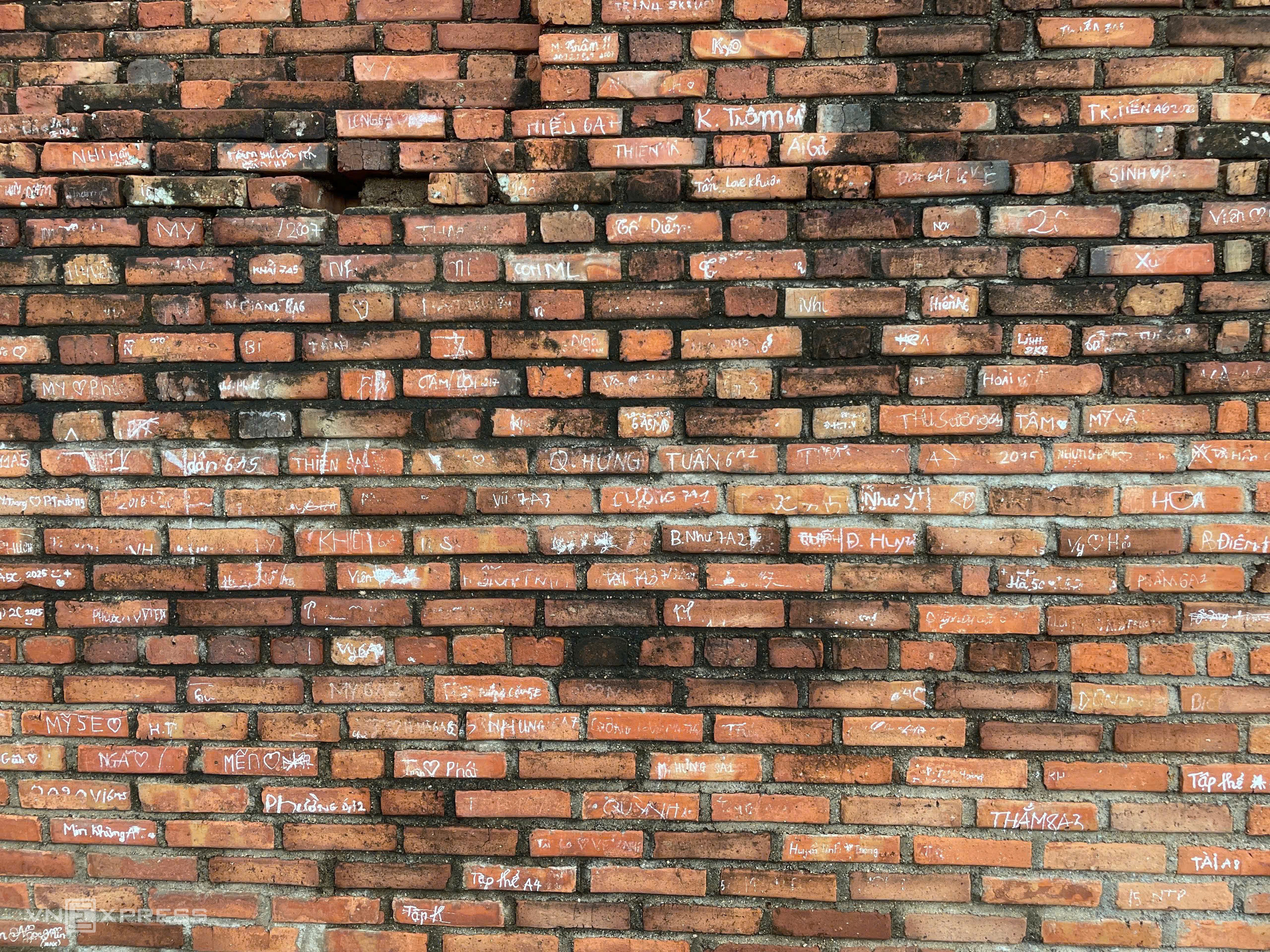 |
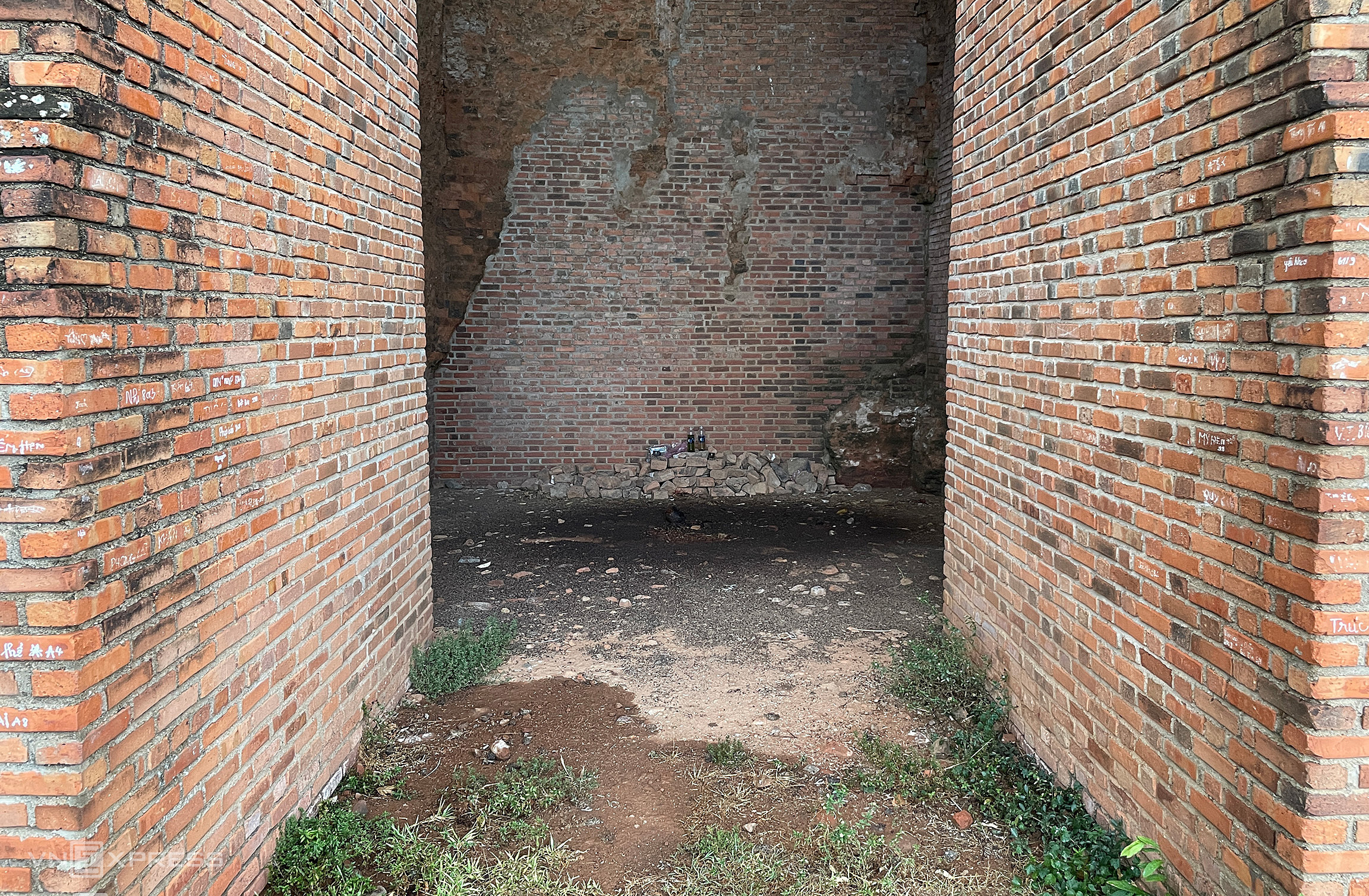 |
The east entrance of Phu Loc Tower. Inside, the tower is damp, the brick walls are mottled and mossy. Bat droppings create a foul odor, and decomposing animal carcasses are present.
Bui Tinh, Director of the Gia Lai Provincial Museum, stated that due to limited funding, the structure lacks security, making it vulnerable to vandalism. The tower's base has been reinforced twice to prevent collapse. The Department of Culture, Sports, and Tourism is proposing and seeking approval for a complete restoration of the tower.
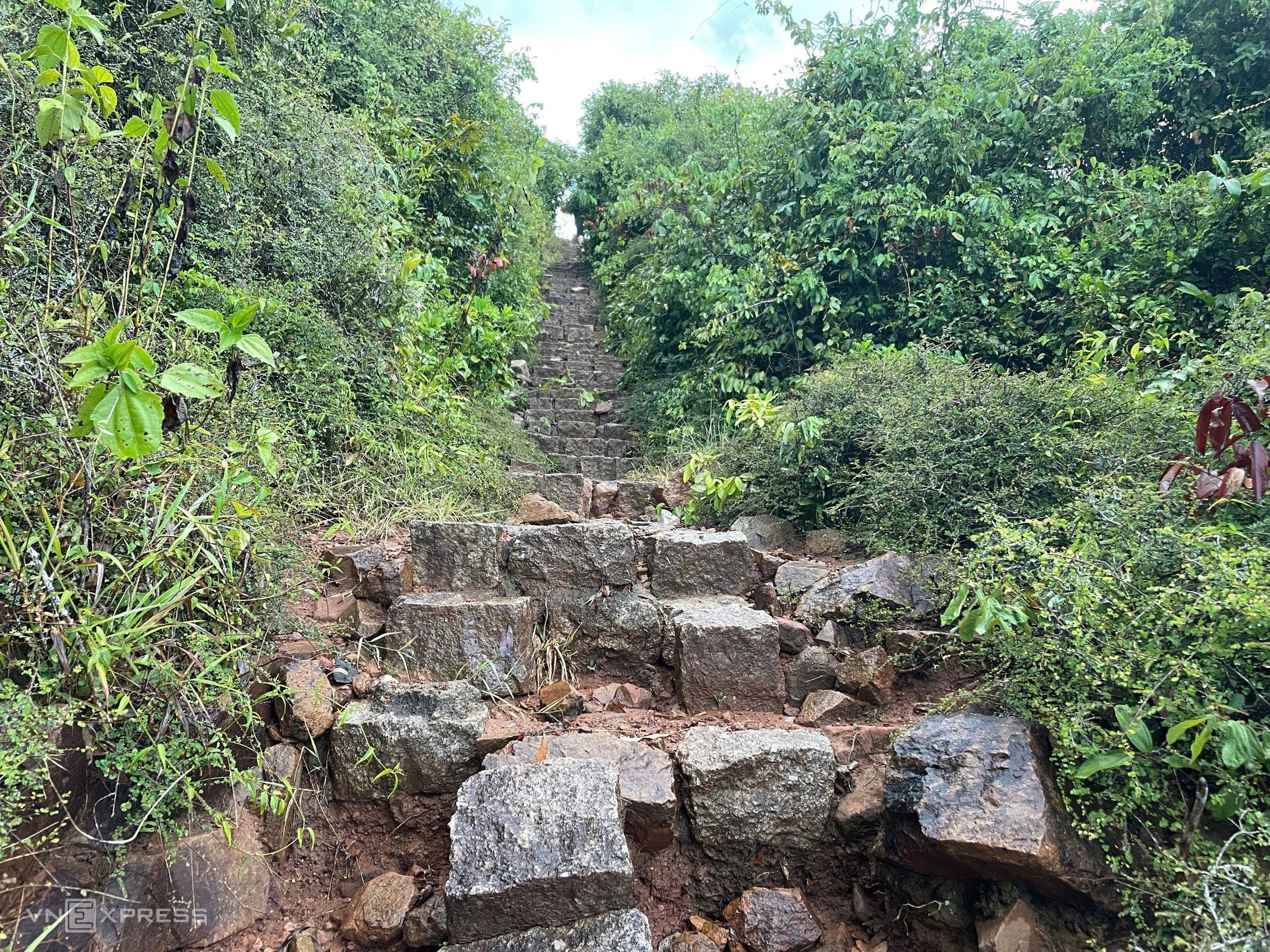 |
The path to Phu Loc Tower is overgrown with bushes.
According to Bui Tinh, Director of the Gia Lai Provincial Museum, the province has 8 clusters of ancient Champa towers (14 towers) including: Binh Lam, Phu Loc, Thu Thien, Banh It, Canh Tien, Doi, and Duong Long.
Most of the towers and tower clusters have been restored. The remaining structures are undergoing construction, surveys, or project development. However, due to limited funding, priority is given to restoring severely deteriorated sites, and investment has not been uniform.
According to Tinh, the cost of restoration is substantial, exceeding the province's capacity. The recent completion of Canh Tien Tower's restoration was thanks to the combined support from the central government, local authorities, and social contributions.
Tran Hoa












